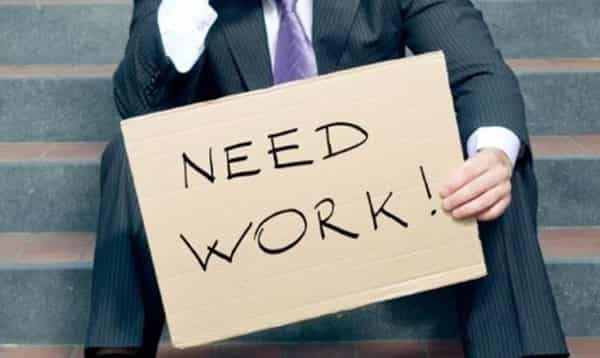Reports that more than 30,000 jobs have been lost following the closure of 15 manufacturing companies in Nigeria are alarming, and they send all the wrong signals about the parlous state of the country’s economy. While such reports are not new in recent times, they nevertheless signpost the urgent need for an official rethink of policies to revive the drowning economy, given in particular that the reasons for industry closure and the consequent jobs loss are legion and well documented. The Manufacturers Association of Nigeria had earlier reported that 767 manufacturers shut down operations while 335 became distressed in 2023.
Although the federal government has been executing desperate measures to stave off the downturn, clearly however, the measures are inadequate as they have not produced the desired results. Governments at all levels must collaborate and come up with holistic and concerted efforts to stem the tide of exit of manufacturing companies from Nigeria.
The report reveals that multinationals like Unilever, Procter and Gamble (P&G) Nigeria, GlaxoSmithKline (GSK) and the more recent, which was Kimberly-Clark, the American multinational that manufactures Huggies diapers with a $100 million investment plant in Ikorodu, Lagos that was launched in 2022, among others have exited the market segments entirely. At Kimberly-Clark, about 90 per cent of its employees, or over 6,000 employees lost their jobs, as the company employed about 1,000 direct and 5,000 indirect jobs.
No doubt, the loss of over 30,000 jobs depicts an economy that is on its knees. More worrisome is the multiplier effect of these job losses manifesting in negative effects on the economy beyond their direct reduction in expenditures. In aggregate terms, a few jobs lost here and a few there have a substantial effect far beyond the local economy.
The country’s economy has been beset with several challenges. Layoffs, down and right sizing have become the order of the day, impacting virtually all sectors of the economy in the last few years. From insecurity to capable hands (youths) leaving the country in droves; from the health sector to the education sector, the complaints have become huge and deafening. There is no succor from the agric sector and relief is far from the transport industry. Fiscal and monetary policies from the Ministry of Finance and the Central Bank of Nigeria have not yielded any substantial results yet.
For the manufacturing sector, the mainstay of every economy, the job loss crisis in Nigeria appears unending, as the bleeding economy continues to widen the door for more exits of major players. Unemployed workers also lose their purchasing power, which can lead to unemployment for other workers, creating a cascading effect that ripples through the economy. In this way, unemployment even impacts those who are still employed.
The National Bureau of Statistics (NBS) has pegged the current rate of unemployment at 4.1 per cent. On average, a typical manufacturing firm will lose close to 2,000 workers if there is a shutdown of operations. Several factors have been identified to have deepened the woes of manufacturers in the country. From skyrocketing energy costs to foreign exchange scarcity, multiple taxes, low purchasing power among consumers and other factors. Report has it that energy costs, soaring by 70 per cent, cost manufacturers N290 billion in Q1.
A senior official of one of the exited multinationals had said that it was difficult to do business in Nigeria as a dollar-denominated organisation and the macroeconomic reality in Nigeria was responsible for its latest strategic decision.
While there is constancy about the challenges that the sector has been battling with in recent memory, the attendant impact these problems have had on employment opportunities in the sector has become alarming.
The Manufacturers Association of Nigeria (MAN) has noted that the decline in the number of jobs created in the sector in the last few years further highlighted the unfriendly business environment. The direct consequence of the decline in job creation and losses, the association said, had been a shrinking of the sector’s capacity utilisation. For example, findings showed that capacity utilisation in the manufacturing sector in the first half of 2023, year-on-year, declined to 56.5 per cent from 57.9 per cent recorded in the corresponding half of 2022. This indicated a reduction of 1.4 percentage points in the last year.
The Federal Government will need to be more ingenious, think out of the box, and save the economy from total collapse. In collaborating with states, the Federal Government should go beyond the rhetoric and return to the drawing board to find a lasting solution to this crisis. Playing the blame game now is unhelpful. The government should implement policies that will put an end to the woes of the manufacturing sector headlong. The manufacturers have said that the recent increase in the monetary policy rate, coupled with the forex crisis that trailed the floating of the naira, has made life increasingly hard for members. Government at all tiers should embrace sound advice to create an environment conducive to addressing production costs and promoting key sectors. Industrial policies, which involve using government incentives and power can play a key role in achieving this goal.
There must be a sharper focus on identifying key sectors that can drive manufacturing growth such as agriculture, technology and renewable energy. There should be among others, cost efficiency, infrastructure investment, access to financing, skills development, international collaboration, reduction of bureaucracy, transparency and collaboration, and adaptation to market dynamics among others. The Federal Government owes the nation a duty to revive this economy and stop the drift. The time to act is now.






